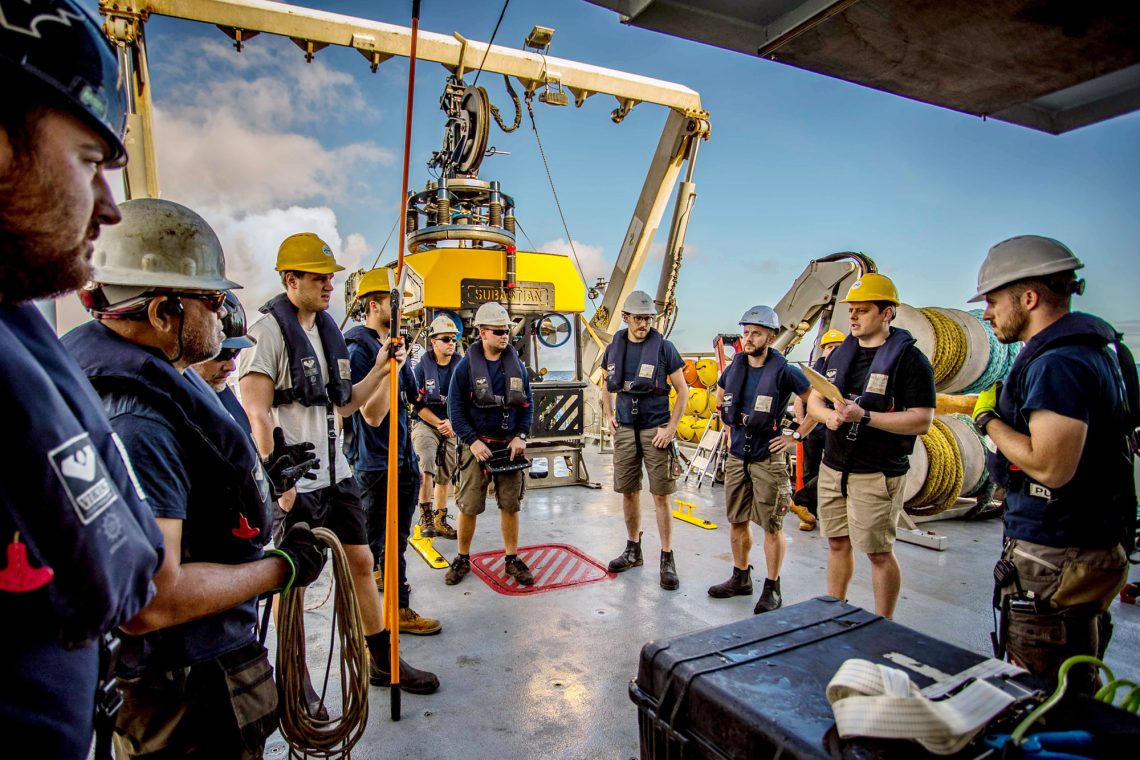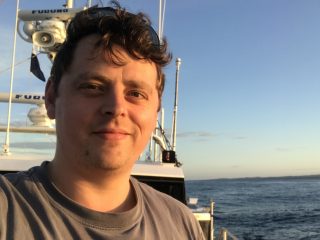My name is David Henderson and I am part of a team of engineers from the Australian Centre for Field Robotics, at the University of Sydney. Our job is to operate and maintain our Autonomous Underwater Vehicles (AUVs) on board Falkor.
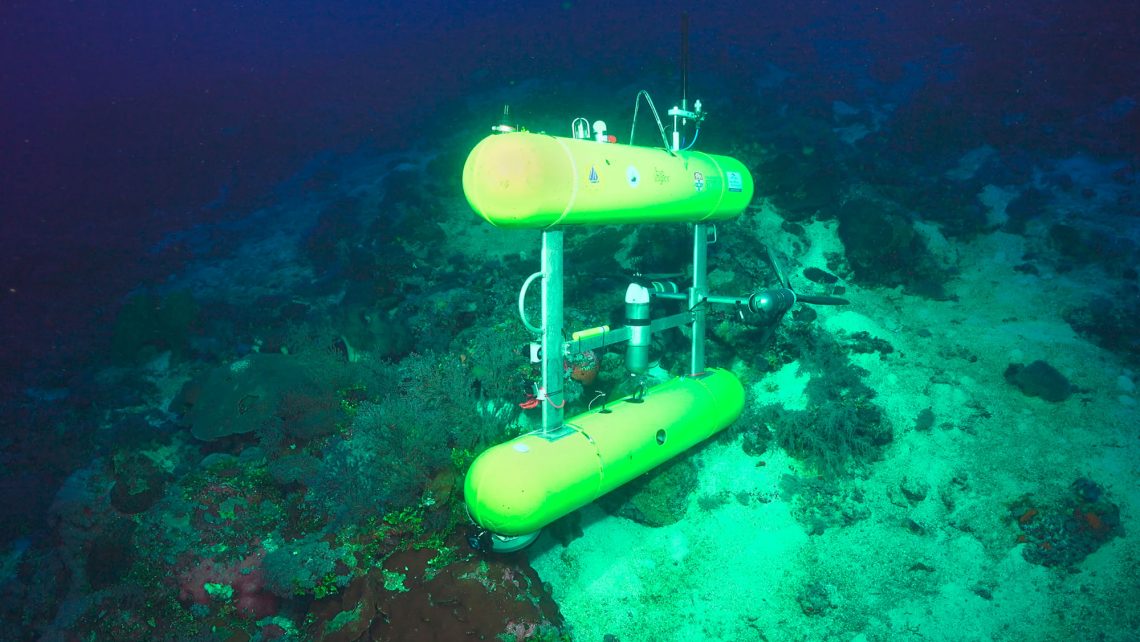 This is Sirius, the largest AUV we operate. She is a twin hull, 260kg veteran of many campaigns, with over 15 years of service in the field. There is not much of her that has not been upgraded, redesigned, broken, repaired, or replaced. She is a workhorse that has the battle scars to prove it – and she has earned a few more this trip!
This is Sirius, the largest AUV we operate. She is a twin hull, 260kg veteran of many campaigns, with over 15 years of service in the field. There is not much of her that has not been upgraded, redesigned, broken, repaired, or replaced. She is a workhorse that has the battle scars to prove it – and she has earned a few more this trip!
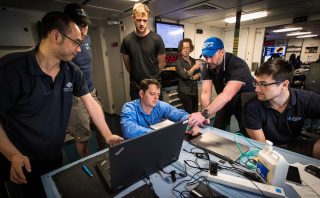 Sirius’s job is to survey the ocean floor. Specifically, to provide georeferenced stereo images of benthic habitats. We set a mission path in an area of interest, do our pre-dive checks, crane her into the water, and start the mission. Happily hovering 2m above the sea floor, Sirius snaps 180 pictures every minute; so far this trip, we have collected nearly 100,000 high-resolution images of the Coral Sea’s incredible seascapes!
Sirius’s job is to survey the ocean floor. Specifically, to provide georeferenced stereo images of benthic habitats. We set a mission path in an area of interest, do our pre-dive checks, crane her into the water, and start the mission. Happily hovering 2m above the sea floor, Sirius snaps 180 pictures every minute; so far this trip, we have collected nearly 100,000 high-resolution images of the Coral Sea’s incredible seascapes!
These images are used by marine ecologists to characterize benthic habitats, monitor change, and make new discoveries. Our data is compiled, processed, and made publicly available via the Australian Ocean Data Network, for use by marine ecologists worldwide.
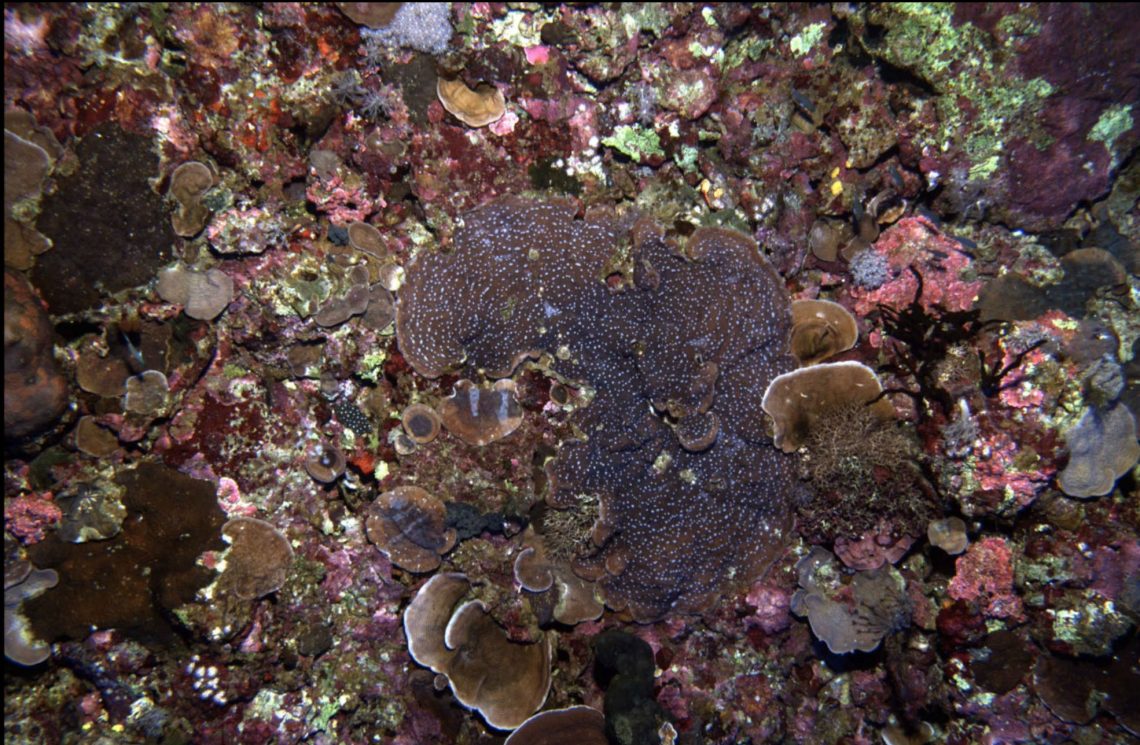
So all this sounds fun and interesting, right? Well, sometimes things go wrong. Dropping half-a-million dollars worth of electronics into seawater is inherently risky. When something breaks, there is no quick trip to the shops for parts – we are hundreds of kilometers off shore. And it is our job to fix anything and everything that comes up.
Our most eventful day so far was at Cairns Seamount. It is a 1200m underwater mountain with a flat top that is 60m deep, 300m wide, sheer sides, and has never been scientifically imaged before. Ocean currents form upwellings, as well as fast, unpredictable flow patterns that are difficult to estimate. We planned our Sirius mission in detail, knowing the significance of this site and how valuable the data could be. With Falkor in position, we launched our venerable AUV.
The dive down was perfect. Sirius found the shelf, locked on, and started her path along the top of the seamount. All was well until Sirius reached the edge of the seamount and tried to turn back up current: we saw her stop, sit on the ocean floor, and abort the mission. Sirius should have floated back to the surface, but the current held her in place. Luckily, our damsel in distress had a knight in shining armor close by!
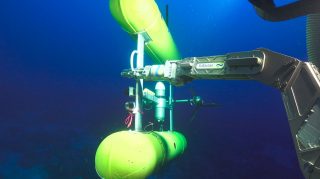 SuBastian is a 3200kg Remotely Operated Vehicle (ROV). With an exceptional crew behind it, the ROV was launched into the water and dove to find Sirius, perched precariously on the edge of a sheer cliff. SuBastian embraced Sirius with it strong (yet gentle) titanium manipulators and bought her to the surface. A most wonderful robotic romance which saved a very awkward call to the boss!
SuBastian is a 3200kg Remotely Operated Vehicle (ROV). With an exceptional crew behind it, the ROV was launched into the water and dove to find Sirius, perched precariously on the edge of a sheer cliff. SuBastian embraced Sirius with it strong (yet gentle) titanium manipulators and bought her to the surface. A most wonderful robotic romance which saved a very awkward call to the boss!
We found the issue and fixed it. Long hours repairing Sirius on a deadline is an intense part of job.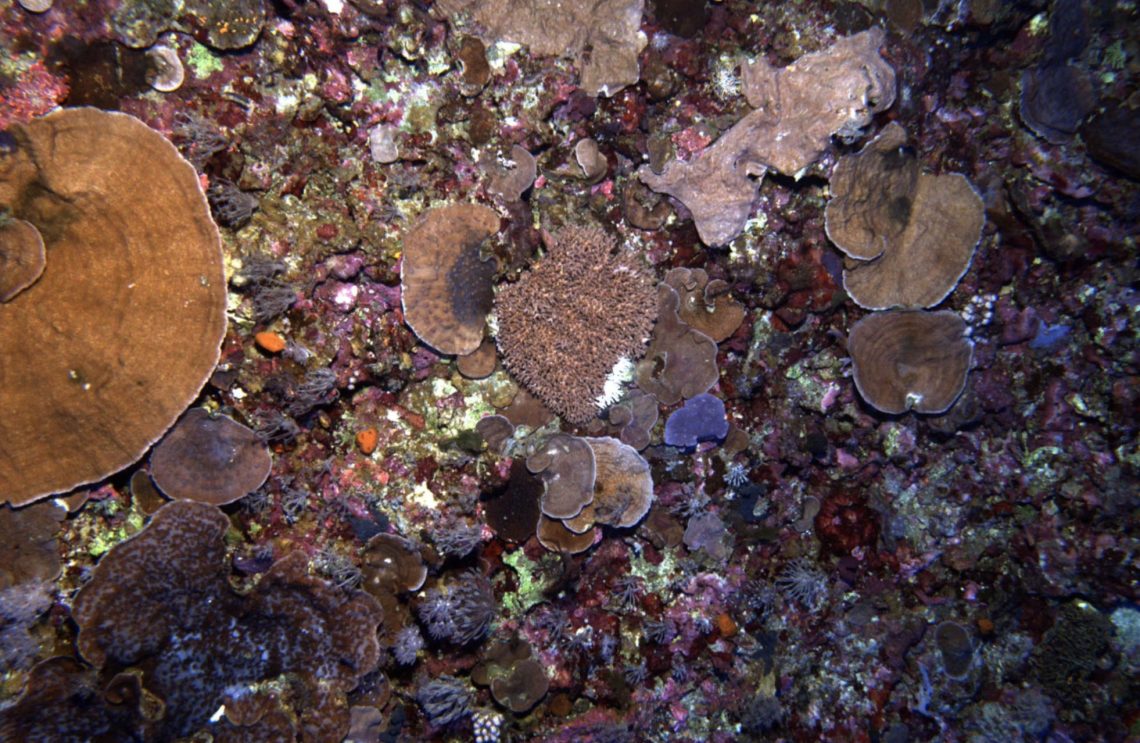
For me, the best part of being on field trips is the community. You will not find a more passionate group of people anywhere. Friendships form, stories are shared, commiserations are offered, families onshore are missed. Everyone is working together towards a common goal. Falkor’s crew is incredible – the ROV and deck crew; Captain and officers; Purser and stewardesses; chefs, engineers and marine technicians – have all helped so much. It is a huge privilege to work alongside this multinational mix of professional, friendly people. Thank you to SOI and the science team for having us on this incredible journey into the unknown. 